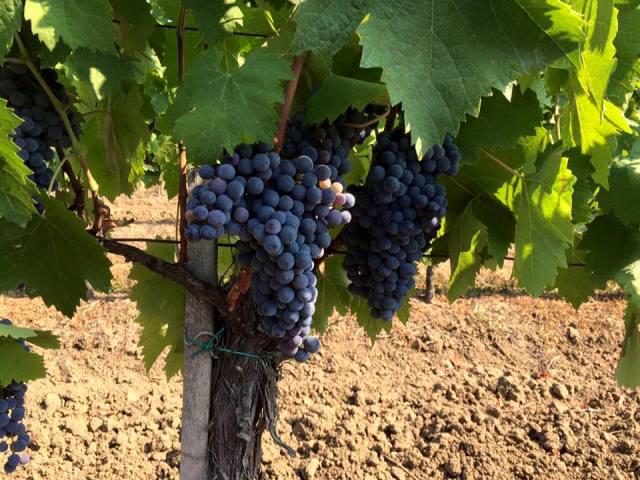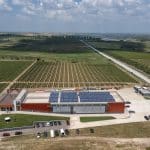According to the Passport international[1] VIVCwhere it has the number 23178, Negru de Dragasani, (ROM75), Romanian variety black wine grapes with full pedigree [2]], awarded by the Dragasani Wine Research Station in Romania and subsequently confirmed by molecular analysis[3], is the result of hybridization between the varieties Negru Virtos and Saperavi. No known descendants or other genetic relationships[4] between Negru de Dragasani and other varieties.
The Negru de Dragasani is very susceptible to powdery mildew attack (Erysiphe necator Schwein.) on leaves and bunches (score 1 on a scale of 1 to 10), resistant to cercosporiosis (Cercospora sp.) on leaves (score 7), resistant to anthracnose (Elsinoë ampelina Shear) on leaves (score 7) and susceptible to disease form on shoots (score 3). These resistance/susceptibility properties recommend for the variety Negru de Dragasani green works to limit the possibility of powdery mildew outbreaks.
TheNegru de Dragasani is cultivated exclusively in Romania, which guarantees it this name in all the places in the world where the wine produced from it could be found. The name defines its richness in phenolic compounds, the grape berry[5] having a very high content in anthocyanins at technological maturity. Catalogue number[6] in the OIV list is 2427 and has no synonyms. A certain controversy has arisen in recent years, around the name of this variety, which is why the Romanian wine associations are trying to establish at least a synonym, which would make it possible to cultivate it without comments in any vineyard in Romania, not only in Dragasani. Those who have experimented with growing the variety Negru de Dragasani and in other winegrowing regions of Romania have discovered a special plasticity, on the background of an original expression generated by microclimate, soil, viticultural technology and oenological techniques.
In Romania, Negru de Dragasani is cultivated on an area of 58.13 ha (according to ONVPV, 2022), it is spread over 7 vineyards in the South and South-West of the country (Dealu Mare, Samburesti, Dragasani, Banu Maracine, Segarcea, Mehedinti and Recas), with the largest area in a single vineyard, at home, in Dragasani.
To deepen the characteristics of this variety, we recommend tasting:
- Mennini Winery – Le Reve, Black of Dragasani
- Black Avincis of Dragasani
- Metamorphosis Vineyards – Via Marquis, Negru de Dragasani
Sources:
- https://www.vivc.de/index.php?r=passport%2Fview&id=23178
- https://www.vivc.de/index.php?r=passport/viewtree&id=23178
- https://www.researchgate.net/publication/236755841_Molecular_characterization_of_old_local_grapevine_varieties_from_South_East_European_countries
- https://www.researchgate.net/publication/326076728_Combining_Microsatellite_Markers_and_Ampelography_for_Better_Management_of_Romanian_Grapevine_Germplasm_Collections
- STROE Marinela Vicuta – Genetic diversity the viticultural germplasm fund of Romania – news accessions. Scientific Papers. Series B. Horticulture, Vol. LXV, 2021, ISSN 22855653, ISSN CD-ROM 2285-5661, ISSN Online 2286-1580, ISSN-L 2285-5653, International Database Indexing: Web of Science Core Collection (Emerging Sources Citation Index), Index Copernicus, CABI, Ulrich’s Periodicals Directory (ProQuest), PBN, Scientific Indexing Service, Scipio, OCLC (WorldCat), Research Bible, Google Scholar, forthcoming. http://horticulturejournal.usamv.ro/pdf/2021/issue_1/Art48.pdf.
- OIV list_Publication_2013
- Photos: Avincis winery






